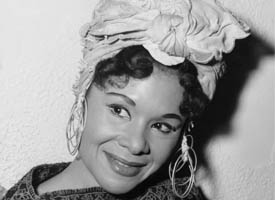- Details
 Rudolph “Rudy” Perz was born on December 6, 1925 in Chicago and attended the University of Illinois in Chicago. After graduating, Perz worked for the Walter J. Thompson and Leo Burnett advertising firms in Chicago.
Rudolph “Rudy” Perz was born on December 6, 1925 in Chicago and attended the University of Illinois in Chicago. After graduating, Perz worked for the Walter J. Thompson and Leo Burnett advertising firms in Chicago.
Rudy was working for the Chicago-based Leo Burnett advertising agency when he was tasked with finding an advertisement strategy for Pillsbury products. After an exhausting effort, Perz popped open one of the cardboard tubes and imagined a small boy made out of the dough. After dressing the character with a chef’s hat, scarf and big blue eyes, Poppin’ Fresh was born in 1965.
The original Poppin’ Fresh was a ‘Doughboy’ which was animated in a similar way to today’s Claymation. Early advertisements featuring Poppin’ Fresh would require over 700 photographs just to create a 30 second commercial.
The character went on to become one of the most successful advertising campaigns of all time, with Pillsbury still featuring him in their commercials 50 years later.
Learn more:
Advertising Age – Rudolph Perz
New York Times – Rudolph Perz
- Details
 Arquette was born on April 8, 1968 in Chicago and began her acting career in 1987, starring in the television film “Daddy” and in the feature film “A Nightmare on Elm Street 3.” In 1992, she won her first award, a CableACE Award for Best Lead Actress in a Mini-Series for her role in “Wildflower.”
Arquette was born on April 8, 1968 in Chicago and began her acting career in 1987, starring in the television film “Daddy” and in the feature film “A Nightmare on Elm Street 3.” In 1992, she won her first award, a CableACE Award for Best Lead Actress in a Mini-Series for her role in “Wildflower.”
She continued her acting career and starred in films such as “True Romance” and “Stigmata” before landing the starring role in her first television series as psychic medium Allison DuBois in “Medium” in 2005. This role netted her an Emmy Award for Outstanding Lead actress that year, as well as numerous Golden Globe, SAG and Emmy Award nominations in following years. After “Medium” came to a close in 2011, she began appearing on the HBO series “Boardwalk Empire” and in 2014 she released “Boyhood,” a project she had been working on over a 14-year period.
In addition to acting, Arquette has worked with numerous charities, including creating her own named “GiveLove,” which focuses on response efforts to the earthquake in Haiti in 2010. She has also worked in part with People for the Ethical Treatment of Animals and for breast cancer awareness.
Learn more:
Patricia Arquette’s IMDb profile
GiveLove – Investing in Haiti
- Details
 Across the globe, governments, non-profits and other organizations are bringing attention to the importance of food safety “from farm to plate” as part of World Health Day 2015.
Across the globe, governments, non-profits and other organizations are bringing attention to the importance of food safety “from farm to plate” as part of World Health Day 2015.
The World Health Organization’s statistics on the impact of food contamination are startling:
- An estimated 2 million deaths occur worldwide every year from contaminated food or drinking water.
- Over 200 diseases can be caused by contaminated food.
- 48 million Americans – one in six – get sick from foodborne diseases each year.
While many food safety precautions affect just farmers and food handlers, consumers can also play a role in greatly diminishing the possibility of food contamination. Keeping hands clean, separating raw and cooked meats, cooking food thoroughly, keeping foods at safe temperatures and ensuring water and raw materials are safe and bacteria free are all essential to ensure foods are safe to eat.
The Institute for Food Safety and Health at the Illinois Institute of Technology plays a vital role in researching food safety and nutrition issues, providing essential information to the food industry.
Learn more:
From Farm to Plate, Make Food Safe – Huffington Post
CDC Estimates of Foodborne Illness in the U.S.
How Scientists Track Food Poisoning – Forbes
- Details
 Wisconsin Badgers forward Frank Kaminsky was awarded the Naismith College Player of the Year award yesterday. Every year, the award is given to the top men’s and women’s collegiate basketball players.
Wisconsin Badgers forward Frank Kaminsky was awarded the Naismith College Player of the Year award yesterday. Every year, the award is given to the top men’s and women’s collegiate basketball players.
Kaminsky was born and raised in Chicago’s western suburbs. He played basketball while attending Benet Academy in Lisle, and was named first-team all-state by the Chicago Sun-Times while in high school.
Now a senior at the University of Wisconsin, Kaminsky has received many awards and accolades over the last few years. On Friday, he was named AP Player of the Year, becoming the first basketball player at the University of Wisconsin to receive the award since 1961. This year he has averaged 18.7 points and 8.1 rebounds per game.
Wisconsin will be playing this evening against Duke in the NCAA championship game. You can watch tonight’s game, which starts at 8:18 p.m., on CBS.
Learn more:
Wisconsin forward Frank Kaminsky wins Naismith Trophy - Sports Illustrated
NCAA championship guide - USA Today
UW’s Frank Kaminsky named Player of the Year in college basketball - Milwaukee Journal Sentinel
- Details
 Katherine Dunham, born on June 22, 1909, was best known for her soft, poetic dancing skills. She was raised in Joliet and unlike many other dancers, didn’t start dancing until her late teens.
Katherine Dunham, born on June 22, 1909, was best known for her soft, poetic dancing skills. She was raised in Joliet and unlike many other dancers, didn’t start dancing until her late teens.
Her first leading role was in Ruth Page’s ballet “La Guiablesse” in 1933. She did the role while attending the University of Chicago where she was studying social anthropology. She was inspired by two of her professors who stressed the importance of the survival and understanding of African-American culture. While attending classes, Dunham taught dance classes for children and gave recitals in a Chicago storefront. She called her student company “Ballet Negre.”
After graduation, Dunham focused on the dances of Haitian people. In 1945, she opened the Dunham School of Dance and Theater in Manhattan. She also became more politically engaged by fighting segregation in hotels, restaurants and theatres. In 1962, she opened a Broadway production titled “Bambouche,” which featured 14 dancers, singers and musicians of the Royal Troupe of Morocco.
In 1967, she opened a cultural program and school for children and youth in East St. Louis called the Performing Arts Training Center. Ten years later, the Katherine Dunham Museum would open. Dunham received many awards throughout her lifetime and will always be known as an influential pioneer of black dance.
Learn more:
Katherine Dunham – Biography
Katherine Dunham – A Life in Profile
Katherine Dunham Museum
More Articles …
- Did You Know? The dishwasher was invented in Shelbyville
- Did You Know? April 1 is Cheap Trick Day in Illinois
- Did You Know? Frank Lloyd Wright designed a multitude of Illinois buildings
- Did You Know? Illinois is #2 in the United States for corn production
- Did You Know? Michael Jordan’s highest scoring game was 25 years ago





